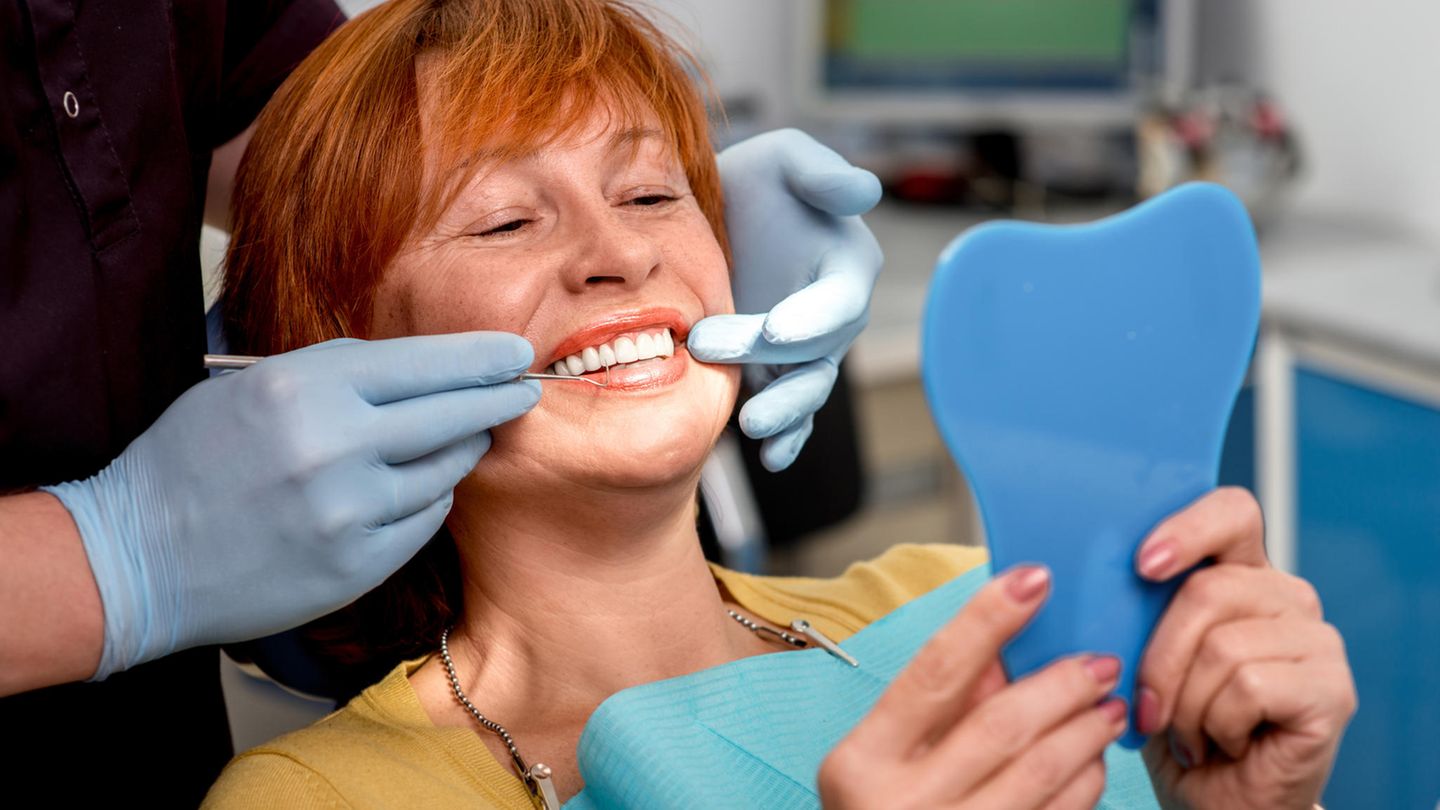In the dentist’s chair, it can quickly become expensive for patients if a new crown or inlay is needed. Dental insurance covers most of the cost.
Whether a crown or even an entire implant – anyone who needs a denture often has to dig deep into their pockets. A study by Barmer shows that people with statutory health insurance between the ages of 60 and 80 had to pay more than 1,000 euros out of their own pockets for dentures in 2019. The good news: supplementary dental insurance can be worthwhile for many people with statutory health insurance. Stiftung Warentest compared 267 tariffs. A total of 111 supplementary dental insurance policies were rated “very good”.
Since the statutory health insurance only covers crowns, inlays or implants with a so-called standard supply, it is often expensive for the insured. Because: This care corresponds to the medical standard of the respective finding. The health insurance pays a fixed amount – regardless of whether someone chooses an implant or just a metal bridge. The result: the subsidy often covers less than a third of the total costs.
Older people pay higher premiums
In such cases, additional dental insurance can be worthwhile so that you don’t have to pay hundreds or thousands of euros for dentures in one fell swoop. In general, such a policy can still be worthwhile for older people. It is best to take out insurance when all teeth and dentition are still in order. And in younger years, the monthly contributions are usually lower. Important: Supplementary dental insurance usually does not pay for upcoming treatments. Stiftung Warentest warns against concealing upcoming treatments when applying – the insurers would check the information from the dentist.
Which tariff is the best depends on the living conditions. The testers divided insured persons into three groups and calculated the prices for an insured person aged 43. Anyone who only wants to cover their own share with supplementary dental insurance is best off with the “Plan Z3” tariff from Generali. It received the test result “good” and costs 12 euros per month. Suitable tariffs are available from six euros per month for 43-year-olds.
If you don’t want to use the cheapest dentures for financial reasons, you can arm yourself with supplementary insurance. According to Stiftung Warentest, this type of customer does not have to pay more than 30 euros a month for a good tariff. In this category, the tariff “EZ+EZT” from Hanse Merkur and “CEZP-U” from Continentale received a “very good” and cost 27 and 29 euros per month respectively. Insured persons who do not want to bear the high costs even with very expensive dentures such as implants should choose all-round protection. These tariffs cost between 22 and 58 euros per month for entry at the age of 43. With increasing age, the costs of almost all policies increase. In this category there are 26 tariffs that have received the best rating.
Dental insurance is not worth it for everyone
If you have a very low income, the testers advise against supplementary dental insurance. In these cases, the health insurance pays all costs of standard care upon application. This regulation applies to single people with a gross monthly income of 1,316 euros or less and to couples with one child with a monthly household income of 2,138.50 euros. Also affected by the hardship regulation are people who live on unemployment benefit II, receive basic security or student loans. According to Stiftung Warentest, even those with a slightly higher income should ask the health insurance company for higher subsidies. The health insurance company must advise insured persons.
If you go to the dentist regularly for check-ups, you should have the bonus booklet filled out. Anyone who can provide evidence of the check-up appointments five years in a row will now receive a subsidy of 70 percent for standard care instead of 60 percent from the sixth year onwards.
The whole (paid) test
Sources: ,
Source: Stern




